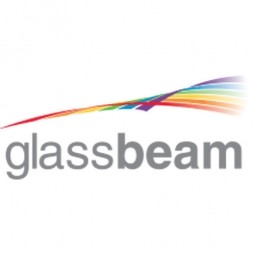下载PDF
Driving Superior Quality of Service and Patient Care with AI/ML

技术
- 分析与建模 - 数据即服务
- 分析与建模 - 机器学习
适用行业
- 医疗保健和医院
用例
- 临床图像分析
服务
- 数据科学服务
挑战
患者成本节省归因于 GDI 不属于医院网络这一事实。为了提高服务质量和患者护理质量,GDI 于 2017 年启动了企业范围内的“数据驱动计划”。 GDI 寻求制定财务和运营课程,利用机器数据分析为其生物医学工程团队利用分析的消耗和使用,以实现对成像机器的真正预测性维护,并通过对其医师转诊网络的深入分析来推动卓越的患者护理。
客户
网关诊断成像 (GDI)
关于客户
Gateway Diagnostic Imaging 是一家门诊医学影像公司,在达拉斯/沃斯堡地区设有多个分支机构。
Gateway 诊断成像为患者节省数百美元,同时提供出色的服务和无可挑剔的质量!擅长核磁共振、CT、超声、X光
解决方案
资产利用率仪表板。 Clinsights 为他们的服务工程师提供了按设施制造商类型、程序计数和检查类型划分的整个成像设备组的实时利用率数据。因此,通过识别利用率不足或过度使用的设施和机器,负载平衡运营决策变得有效。
推荐医师仪表板。 Clinsights 提供了一个实时转诊医生仪表板,可通过该仪表板查找哪些医生正在退出,哪些医生正在进入新医生——随着时间的推移、设施和检查类型的不同。
机器正常运行时间仪表板。 Clinsights 为多模式、多制造商视图提供了单一平台,使临床工程团队能够将计划外停机时间转移到计划内维护窗口,从而节省每台机器的宝贵时间,从而增加收入并提供更好的患者护理。
运营影响
数量效益
相关案例.

Case Study
Hospital Inventory Management
The hospital supply chain team is responsible for ensuring that the right medical supplies are readily available to clinicians when and where needed, and to do so in the most efficient manner possible. However, many of the systems and processes in use at the cancer center for supply chain management were not best suited to support these goals. Barcoding technology, a commonly used method for inventory management of medical supplies, is labor intensive, time consuming, does not provide real-time visibility into inventory levels and can be prone to error. Consequently, the lack of accurate and real-time visibility into inventory levels across multiple supply rooms in multiple hospital facilities creates additional inefficiency in the system causing over-ordering, hoarding, and wasted supplies. Other sources of waste and cost were also identified as candidates for improvement. Existing systems and processes did not provide adequate security for high-cost inventory within the hospital, which was another driver of cost. A lack of visibility into expiration dates for supplies resulted in supplies being wasted due to past expiry dates. Storage of supplies was also a key consideration given the location of the cancer center’s facilities in a dense urban setting, where space is always at a premium. In order to address the challenges outlined above, the hospital sought a solution that would provide real-time inventory information with high levels of accuracy, reduce the level of manual effort required and enable data driven decision making to ensure that the right supplies were readily available to clinicians in the right location at the right time.

Case Study
Gas Pipeline Monitoring System for Hospitals
This system integrator focuses on providing centralized gas pipeline monitoring systems for hospitals. The service they provide makes it possible for hospitals to reduce both maintenance and labor costs. Since hospitals may not have an existing network suitable for this type of system, GPRS communication provides an easy and ready-to-use solution for remote, distributed monitoring systems System Requirements - GPRS communication - Seamless connection with SCADA software - Simple, front-end control capability - Expandable I/O channels - Combine AI, DI, and DO channels

Case Study
Driving Digital Transformations for Vitro Diagnostic Medical Devices
Diagnostic devices play a vital role in helping to improve healthcare delivery. In fact, an estimated 60 percent of the world’s medical decisions are made with support from in vitrodiagnostics (IVD) solutions, such as those provided by Roche Diagnostics, an industry leader. As the demand for medical diagnostic services grows rapidly in hospitals and clinics across China, so does the market for IVD solutions. In addition, the typically high cost of these diagnostic devices means that comprehensive post-sales services are needed. Wanteed to improve three portions of thr IVD:1. Remotely monitor and manage IVD devices as fixed assets.2. Optimizing device availability with predictive maintenance.3. Recommending the best IVD solution for a customer’s needs.

Case Study
HaemoCloud Global Blood Management System
1) Deliver a connected digital product system to protect and increase the differentiated value of Haemonetics blood and plasma solutions. 2) Improve patient outcomes by increasing the efficiency of blood supply flows. 3) Navigate and satisfy a complex web of global regulatory compliance requirements. 4) Reduce costly and labor-intensive maintenance procedures.

Case Study
Harnessing real-time data to give a holistic picture of patient health
Every day, vast quantities of data are collected about patients as they pass through health service organizations—from operational data such as treatment history and medications to physiological data captured by medical devices. The insights hidden within this treasure trove of data can be used to support more personalized treatments, more accurate diagnosis and more advanced preparative care. But since the information is generated faster than most organizations can consume it, unlocking the power of this big data can be a struggle. This type of predictive approach not only improves patient care—it also helps to reduce costs, because in the healthcare industry, prevention is almost always more cost-effective than treatment. However, collecting, analyzing and presenting these data-streams in a way that clinicians can easily understand can pose a significant technical challenge.






